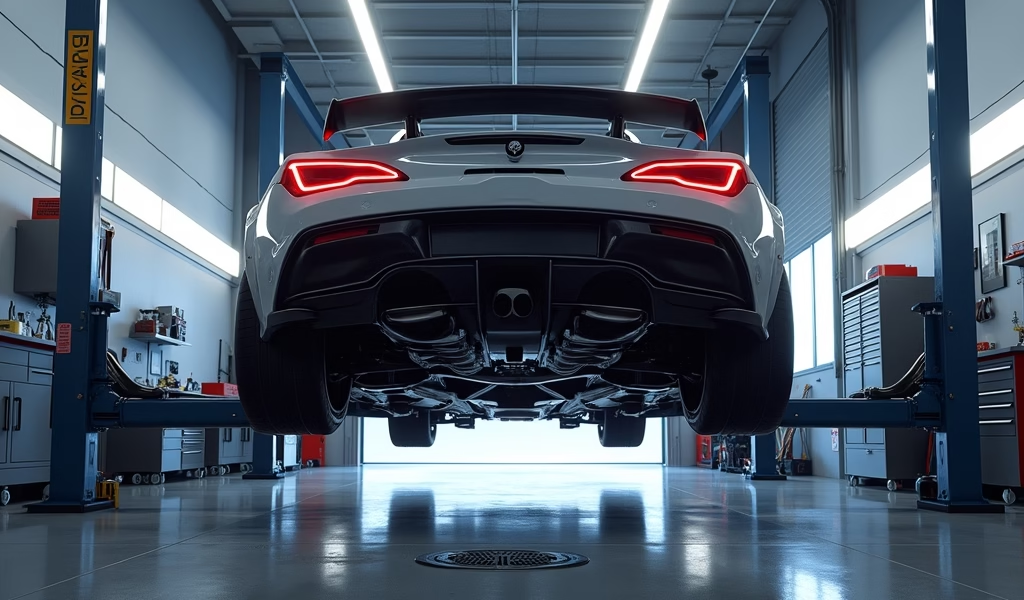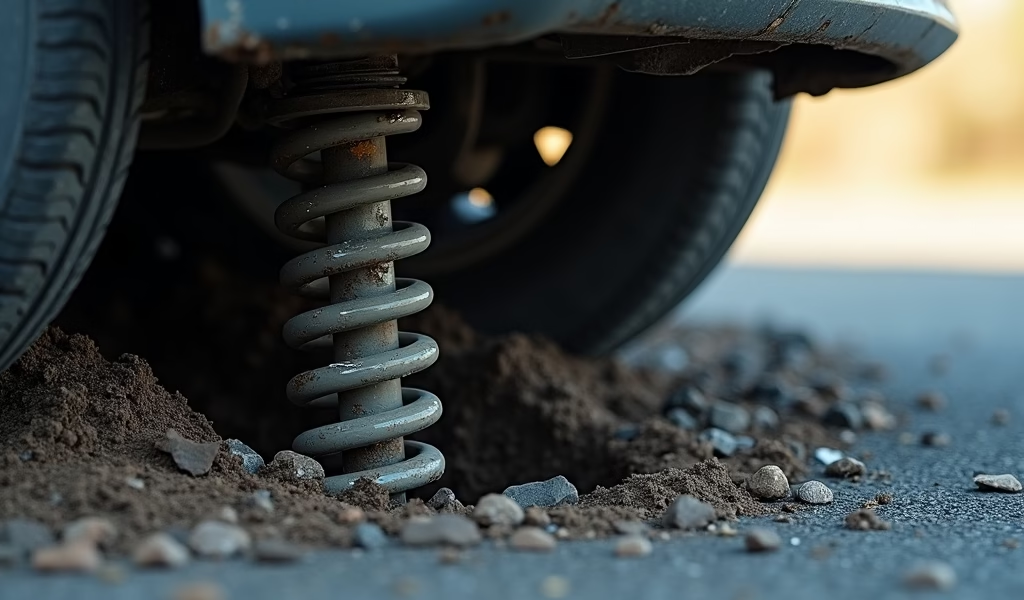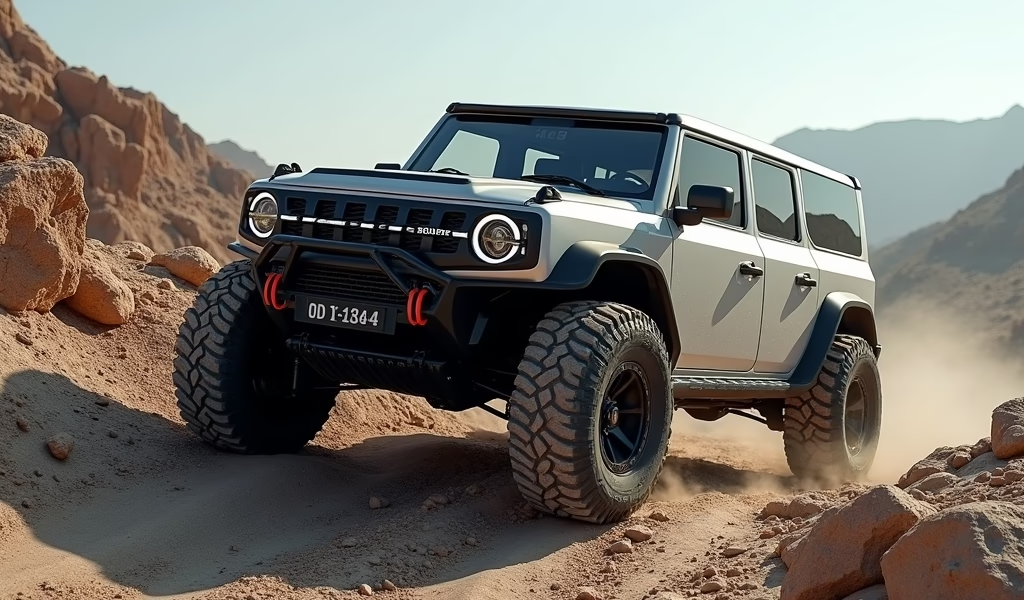Overview
This article examines how proper suspension travel affects vehicle performance, covering symptoms of limited travel, common causes, and specific solutions for both street and off-road applications. It provides detailed guidance on front and rear suspension improvements, including shock absorber upgrades, spring considerations, and geometry optimization, while distinguishing between DIY-appropriate modifications and those requiring professional installation.
Table of Contents
- Understanding Suspension Travel
- Signs of Limited Suspension Travel
- Causes of Suspension Travel Limitations
- Front Suspension Travel Solutions
- Rear Suspension Travel Improvements
- Off-Road Specific Recommendations
- Street Performance Considerations
- DIY vs. Professional Solutions
- Conclusion
- Frequently Asked Questions
Understanding Suspension Travel
When a customer rolls into my shop complaining about a harsh ride, poor handling, or premature component wear, one of the first things I check is suspension travel. In my 20+ years turning wrenches, I’ve seen how limited suspension movement can transform a comfortable cruiser into a bone-rattling beast.
Suspension travel refers to the total distance your wheels can move up and down while maintaining proper contact with the road. Think of it as your vehicle’s ability to “breathe” over terrain changes. When your suspension has adequate travel, it absorbs impacts, maintains stability, and keeps those tires firmly planted where they belong—on the ground.
Different vehicles have different suspension travel needs. Your family sedan might get by with 4-6 inches of total travel, while serious off-roaders might demand 10-12 inches or more. What matters isn’t just the amount but how effectively your vehicle uses the travel it has.
The suspension system acts as the mediator between road imperfections and your vehicle’s frame. When working properly, you hardly notice it doing its job. When travel is restricted, every bump, dip, and crack in the road gets transmitted directly to the chassis—and ultimately to you.
Signs of Limited Suspension Travel
How do you know if your suspension travel is insufficient? Your vehicle has ways of telling you:
- Frequent bottoming out over bumps (that harsh “clunk” when your suspension hits its limits)
- Tires losing contact with the road during normal driving
- Unusually stiff ride quality, where even small imperfections feel jarring
- Unpredictable handling, especially during cornering or emergency maneuvers
- Uneven or accelerated tire wear patterns
- Excessive body roll followed by sudden, abrupt resistance
I recently had a customer bring in his newly lifted truck, complaining that it rode like “a shopping cart on a cobblestone street.” Despite the fancy lift kit, his suspension was binding up early in its travel range. The symptoms were clear, but the causes of suspension travel limitations can be more complex.

Causes of Suspension Travel Limitations
After diagnosing thousands of suspension issues, I’ve identified several common culprits behind limited travel:
Factory Design Limitations
Manufacturers balance cost, intended use, and packaging constraints when engineering suspension systems. Economy cars prioritize comfort on smooth roads over articulation, while even factory off-road packages represent compromises between various performance needs.
The bump stop compression measurement on many factory vehicles reveals how little margin engineers design into daily drivers. These rubber buffers are meant as last-resort protection, but many vehicles contact them during routine driving.
Improper Modifications
In my shop, I regularly see well-intentioned modifications that backfire. That aggressive lowering kit might have your ride looking sharp in the parking lot, but it could be causing your suspension to hit mechanical limits over every speed bump.
Similarly, lifting a vehicle without addressing related components often creates binding issues that limit proper movement. A comprehensive approach to modification is essential for maintaining or improving travel.
Component Wear and Deterioration
Springs sag, bushings compress, shocks lose damping ability—the march of time and miles takes its toll. What was once adequate travel gradually diminishes as components wear.
According to AAA’s vehicle maintenance guidelines, most vehicles need shock replacements every 50,000-100,000 miles, yet many drivers push well beyond these intervals, further restricting effective travel.
Improper Installation or Adjustment
Even quality components installed incorrectly can severely restrict travel. I’ve seen countless torsion bar adjustment procedures performed improperly, creating preload conditions that effectively eliminate inches of available travel.
Cross-threaded hardware, misaligned components, or improper torque specifications can all lead to a suspension system that looks right but performs poorly.
Front Suspension Travel Solutions
The front suspension typically handles 60-70% of impact absorption, making adequate travel particularly important. Here are proven solutions I’ve implemented countless times:
Shock Absorber Upgrades
Quality shock absorbers with valving matched to your vehicle’s weight and use can dramatically improve how effectively your suspension uses available travel. Premium shocks don’t necessarily increase total travel, but they help your suspension use what it has more efficiently.
Look for shocks with digressive valving for street use or position-sensitive damping for off-road applications. These technologies provide variable resistance based on where the shock is in its travel range.
Spring Considerations
Installing properly rated coil springs makes a world of difference. The coil spring free height specification is critical—too tall can lead to binding, while too short reduces available travel.
- Too stiff, and your suspension won’t compress enough over bumps
- Too soft, and you’ll bottom out constantly
- Progressive-rate springs offer an excellent compromise, providing increasing resistance as they compress
Advanced Bump Stop Solutions
Factory bump stops are often designed as last-resort impact absorbers rather than travel management tools. Upgrading to progressive cellular foam or hydraulic bump stops can transform harsh bottom-out moments into controlled compression.
These components effectively add a secondary stage to your suspension, extending usable travel by 1-2 inches in many applications. As SEMA research indicates, advanced bump stops are among the most cost-effective suspension upgrades available.
Geometry Optimization
Proper front-end alignment ensures your suspension components aren’t fighting each other for movement. Particularly in modified vehicles, having alignment settings that accommodate your suspension’s full range of motion is critical.
Adjustable control arms, relocation brackets, and proper caster/camber settings can all contribute to maximizing available travel throughout the suspension’s range of motion.
Rear Suspension Travel Improvements
Rear suspension travel limitations often manifest differently than front issues but can be equally detrimental to ride quality and handling. Here’s what works:
Leaf Spring Solutions
For vehicles with leaf spring suspensions, consider:
- Adding or replacing leaves to adjust spring rate and arch height
- Installing shackle relocation kits to allow more natural movement
- Upgrading to a multi-leaf pack with proper rate progression
I’ve seen dramatic improvements in rear suspension travel just by replacing worn leaf spring bushings and ensuring proper torque on mounting hardware. These simple maintenance items often restore inches of lost travel.
Coil Spring Setups
Rear coil springs follow many of the same principles as front springs, but with added considerations for load-carrying capability. Variable-rate springs can provide both the compliance needed for good articulation and the support required for heavier loads.
For vehicles that see varying loads, self-leveling air springs or helper springs can maintain proper ride height without compromising available travel when running empty.
Limiting Factors Management
Often, it’s not the springs or shocks limiting rear travel but other components. Check for:
- Brake lines with insufficient slack at full droop
- Exhaust components that contact the axle during compression
- Driveshaft angles that become extreme at suspension extremes
Addressing these often-overlooked factors can unleash travel your suspension technically has but can’t effectively use.

Off-Road Specific Recommendations
When the pavement ends, suspension travel becomes even more crucial. After building dozens of dedicated off-road rigs, here are my go-to solutions:
Long-Travel Kits
Purpose-built long-travel kits can increase wheel movement by several inches, but require careful integration with other vehicle systems. These comprehensive upgrades often include:
- Extended control arms or radius arms
- Repositioned mounting points
- Custom-valved shocks designed specifically for increased travel
The transformation in capability is remarkable, but these kits require significant investment and often additional modifications to steering, braking, and drivetrain components.
Droop and Articulation Optimization
While compression travel gets much attention, extension (or droop) travel is equally important for off-road performance. Limit straps should be properly adjusted—tight enough to prevent CV joint or driveshaft binding, but loose enough to allow maximum safe articulation.
Disconnecting sway bars (either manually or with electronic systems) can dramatically increase articulation by allowing wheels to move more independently over uneven terrain.
Integrated Bump Stop Systems
Modern off-road suspensions often incorporate sophisticated hydraulic bump stops that act as secondary dampers. These systems can add several inches of controlled compression in situations where traditional setups would hit hard limits.
For serious off-roaders, hydraulic bump stops are no longer optional equipment—they’re essential components of a comprehensive travel-optimization strategy.
Street Performance Considerations
Performance street applications face unique challenges in balancing handling precision with adequate travel:
The Lowering Challenge
Dropping a vehicle closer to the ground inherently reduces available wheel travel, but thoughtful modifications can minimize the impact:
- Shorter, progressive-rate springs maintain some compliance despite reduced length
- Adjustable perches allow fine-tuning of ride height to preserve crucial travel
- Notched frames or relocated components can provide clearance at full compression
I always tell my performance customers: “Lower is only better until it isn’t.” Finding that sweet spot is key.
Damping Control
Adjustable dampers allow fine-tuning compression and rebound rates to maximize the effectiveness of limited travel. Many quality coilovers offer external adjustment, letting you dial in the perfect balance between handling precision and bump absorption.
For street performance applications, slightly softer compression valving than you might expect often yields better real-world results, as it allows the suspension to use more of its available travel over typical road surfaces.
Chassis Reinforcement
As suspension travel increases, so do the forces transmitted to mounting points. Strengthening suspension mounting locations ensures these forces don’t cause unwanted chassis flex, which can effectively rob you of usable travel.
Strut tower braces, subframe connectors, and seam welding all contribute to a more rigid platform that allows your suspension to work as designed.
DIY vs. Professional Solutions
After guiding countless DIYers through suspension upgrades, I can offer some perspective on what’s reasonable to tackle yourself versus when to seek professional help:
Suitable DIY Projects
- Basic shock and strut replacement
- Spring installation (with proper spring compressors and safety precautions)
- Bump stop upgrades
- Basic bushing replacement
- Limit strap installation
These projects require basic mechanical knowledge and proper tools, but are generally accessible to weekend mechanics with adequate research and preparation.
Professional Territory
Some suspension work falls firmly in professional territory:
- Custom fabrication or structural modifications
- Precise spring rate calculations for specialized applications
- Complex alignment on modified suspensions
- Hydraulic press work for certain bushing replacements
In my experience, the cost of professional installation often pays for itself in proper setup, adjustment, and avoiding damage to expensive components.
Essential Tools for Success
If you’re tackling suspension work yourself, invest in:
- Quality floor jack and jack stands rated for your vehicle’s weight
- Proper spring compressors (for strut assemblies)
- Torque wrenches for accurate fastener tightening
- Penetrating oil for dealing with rusty hardware
- Vehicle-specific service manual with torque specifications
Remember: No suspension modification is worth risking your safety. Use proper equipment and procedures every time.
Conclusion
Suspension travel might seem like a technical detail, but it fundamentally defines how your vehicle performs, handles, and even how long components last. Throughout my career, I’ve seen countless vehicles transformed by properly addressing suspension travel limitations.
The secret isn’t always more travel—it’s making better use of what you have through quality components, proper setup, and regular maintenance. Whether you’re crawling rocks in a Jeep or carving corners in a sports car, optimizing suspension travel delivers tangible benefits in comfort, control, and confidence.
Remember that your suspension is a system where each component interacts with all others. Address limitations holistically rather than focusing on isolated “magic bullet” solutions. With the right approach, even modest improvements in suspension travel can yield dramatic real-world benefits.
Most importantly, don’t ignore those warning signs—that harsh ride or unusual handling characteristic might be your vehicle’s way of telling you it needs more room to breathe. Your spine, your passengers, and your vehicle’s components will all thank you for providing the travel they need.
Key Takeaways
- Adequate suspension travel is crucial for ride quality, handling, and component longevity
- Identifying the specific causes of travel limitation is essential before making modifications
- Quality components properly matched to your vehicle’s weight and use make better use of available travel
- Both compression and extension travel matter for overall performance
- Regular maintenance prevents gradual loss of effective travel as components wear
Take the time to understand your vehicle’s suspension travel needs and address limitations properly—whether through DIY upgrades or professional assistance. The improvement in how your vehicle drives and feels will be worth every minute and dollar invested.
Frequently Asked Questions
How much suspension travel do I really need?
It depends on your vehicle’s use case—daily drivers typically need 4-6 inches, while serious off-roaders benefit from 8-12+ inches. The key is having enough travel to handle the terrain you regularly encounter without bottoming out or losing traction.
Can I increase suspension travel without lifting my vehicle?
Yes, through higher-quality components, removing binding constraints, and optimizing geometry. Many vehicles can gain 1-2 inches of effective travel through better shocks, bump stops, and addressing limiting factors without changing ride height.
Will adding stiffer springs improve my suspension travel?
Not directly—stiffer springs actually compress less under the same load. However, they can prevent bottoming out in heavy-load situations, making better use of available travel while potentially sacrificing ride quality on smaller bumps.
How often should I check my suspension travel?
Perform a basic suspension inspection every 15,000-20,000 miles or whenever you notice changes in ride quality. Look for worn bushings, leaking shocks, sagging springs, and anything that might bind or restrict normal movement.
Are aftermarket long-travel kits worth the investment?
For serious off-road use, absolutely. For daily drivers or occasional trail use, simpler modifications often provide better value. The decision should be based on your actual needs rather than pursuing maximum travel for its own sake.

